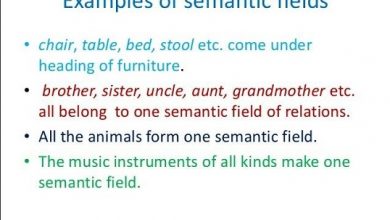Semantics
Semantics
Semantics is a subfield of linguistics that studies the meaning of words, phrases, sentences, and discourse. It is concerned with how people assign meaning to linguistic expressions and how they use these expressions to communicate with each other.
The study of it involves the analysis of both the structure and the content of language. It seeks to understand how linguistic expressions relate to the world around us, and how they are used to convey information about the world.
There are several different approaches , including formal semantics, cognitive semantics, and lexical semantics.
Formal semantics is a mathematical approach to semantics that seeks to provide a rigorous and precise account of the meaning of linguistic expressions. It is concerned with the logical relations between propositions and the truth conditions of sentences.
Cognitive semantics, on the other hand, is an approach that emphasizes the role of mental processes and conceptual structures in the interpretation of language. It seeks to explain how people use language to represent and communicate their knowledge and experience of the world.
Lexical semantics is concerned with the meaning of individual words or lexemes. It involves examining the different senses of a word, how words are related to each other in terms of meaning (such as synonyms and antonyms), and how the meanings of words can change over time.
Compositional semantics is concerned with how the meanings of words combine to form larger units of meaning, such as phrases, clauses, and sentences. It involves examining the rules and principles that govern how words are combined to create meaning, and how different meanings can be expressed through different sentence structures.
It is also closely related to pragmatics, which is the study of how context affects meaning. Pragmatics looks at the social and cultural factors that influence how language is used, and how speakers and listeners interpret language in different situations.
-
Homophones examples with 20 pairs of homophones in English
Homophones In English, the word “Homophones” is used to describe a word that sounds the same as another word but has…
Read More » -
Metonymy examples types/metaphor and synecdoche
Metonymy Metonymy is a rhetorical figure that consists of replacing a word or idea with another with which it is…
Read More » -
Homonyms examples with types
Homonymy is a widespread phenomenon in the English language. Homonyms are often the reason that spoken English is difficult to…
Read More » -
Lexeme examples definition origin types
Lexeme The lexeme is the essential part of a word, the fragment that gives it its meaning and makes it understandable…
Read More » -
Hyponym definition and examples
Hyponymy Hyponymy / Cohyponym describes the mutual relationship between two lexemes, which can be hierarchically arranged through their logical-semantic relationship.…
Read More » -
Lexical family with examples
Word and lexeme families Words were born to respond to the need for communication and identification of what is around…
Read More » -
Semantic role with History and Main roles in English
Semantic role or thematic roles Semantic roles – also called thematic roles – are a concept of linguistics, with which the meaning…
Read More » -
What is an idiomatic expression with Applications and examples
Definition of Idiomatic The idiomatic term refers to everything that is characteristic of a particular language. Idioms, phrases, idioms . In this article we…
Read More » -
Semantic relations with examples in English with detail
Semantic relationships Words are not expressed in isolation, in other words, they establish a relationship with each other to enrich the…
Read More » -

Semantic field characteristics types and examples
Semantic field A semantic field consists of a group of words that have the same meaning and that are part of a…
Read More »